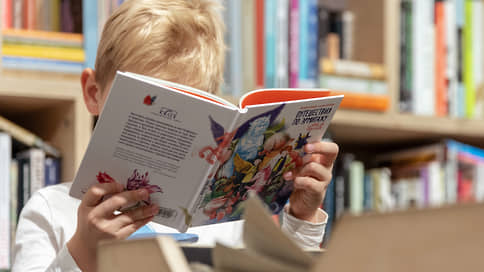Demand for children’s literature fell by almost 30% in Russia
[ad_1]

Sales of children’s literature and publications for schoolchildren in the first quarter fell by almost 30%, bookstores calculated. The trend was affected by an increase in the cost of books by an average of 25% and the redistribution of costs in families. We are talking primarily about print publications – digital book platforms do not observe a drop in the category. But, market participants note, it is paper books that form the basis of the segment. By the end of the year, publishers expect a general decrease in sales by 5-7%. They are trying to improve the situation by expanding the range. But they recognize that only price cuts can have a significant impact on it.
According to the bookselling network “Chitay-gorod”, the demand for the children’s segment (categories “Literature for children and youth” and “Literature for secondary school and applicants”) decreased in the first quarter by almost 30% in physical terms, the president told Kommersant publishing group “Eksmo-AST” Oleg Novikov. The trend, according to him, is associated with an increase in the cost of books by an average of 25%.
After the outbreak of hostilities in Ukraine, there was an acute shortage of personnel in book printing, serious problems with coated paper, consumables, equipment and spare parts for it (see “Kommersant” from 11th of March And October 5 2022). All this led to an increase in book prices: according to the director of the Rosmen publishing house Boris Kuznetsov, by the end of the year it will be about 10-15%.
Major publishers expect to correct the situation by expanding the range.
Thus, the growth of AST shipments in the first quarter year on year amounted to 9%, says Oleg Novikov. Publishing house “Alpina. Children”, according to TexTerra, the share of shipments in the total volume of the group increased from 3% in 2019 to 10% in 2023: “The Alpina. Children publishing house turns five in 2023, and the editors are actively working to expand the range” .
For specialized players, the situation is worse. So, within the framework of the Comic Book Factory project, in the first quarter, shipments of children’s books decreased by 20%, its publisher Fyodor Yeremeev said: “Prices for books have risen sharply, parents are not ready to buy them.” The Nigma Publishing House notes that shipments for the first five months of the year decreased by 26% in physical terms year on year. This was influenced by several factors, explains Svetlana Ivanova, general director of the publishing house: “The rise in the cost of printing not only in Russia, but throughout the world, the redistribution of expenses in the family – before people spent on children’s literature, now they began to think about saving, plus they began to read less.”
Demand for children’s literature is not growing even in the category of digital books. Thus, LitRes Group of Companies reported that sales of children’s literature in the first quarter remained practically at the same level year-on-year: “The top most popular children’s books during this period included: Antoine de Saint-Exupery “The Little Prince” in electronic format , Narine Abgaryan “Manyunya” in audio format, Anna Starobinets “Brutal detective. Shchipach (audio performance)””.
But it is in the children’s segment, says Mr. Yeremeev, that printed media dominate: “Parents are quite conservative and are not ready to give their child a tablet or smartphone. They try to accustom him to coated paper from childhood, to show illustrated pictures through personal contact.” Therefore, the digital format is not so popular, confirms the interlocutor of “Kommersant” in the book market: “It may be cheaper, but printed books are more effective.”
Publishing houses can increase shipments, but this will not improve the situation with sales, a Kommersant source in one of the publishing houses believes: “The children’s assortment will simply lie in warehouses until they start buying it, the situation will remain the same.” In general, according to the interlocutor of Kommersant, the market for children’s literature in 2023 will fall by 5-7%.
The development of the direction is possible with the assistance of the state. And there are such projects – for example, the National Prize in the field of children’s and adolescent literature, the establishment of which was announced in early April, Mr. Novikov noted: analogy with the “Pushkin’s Map”), thanks to which classical and modern works, primarily domestic ones, will become available to children.
[ad_2]
Source link





